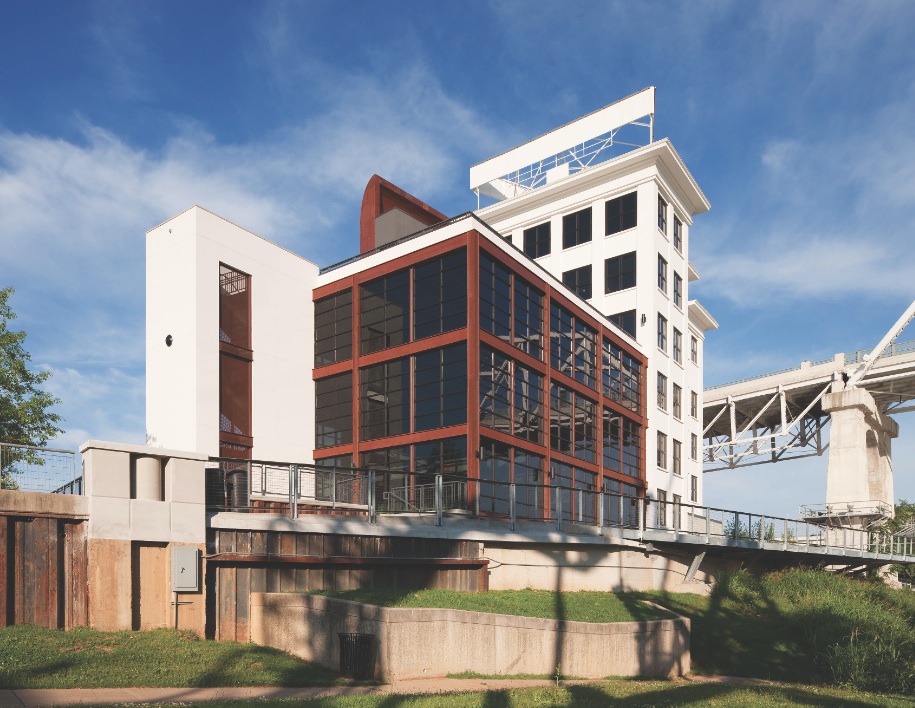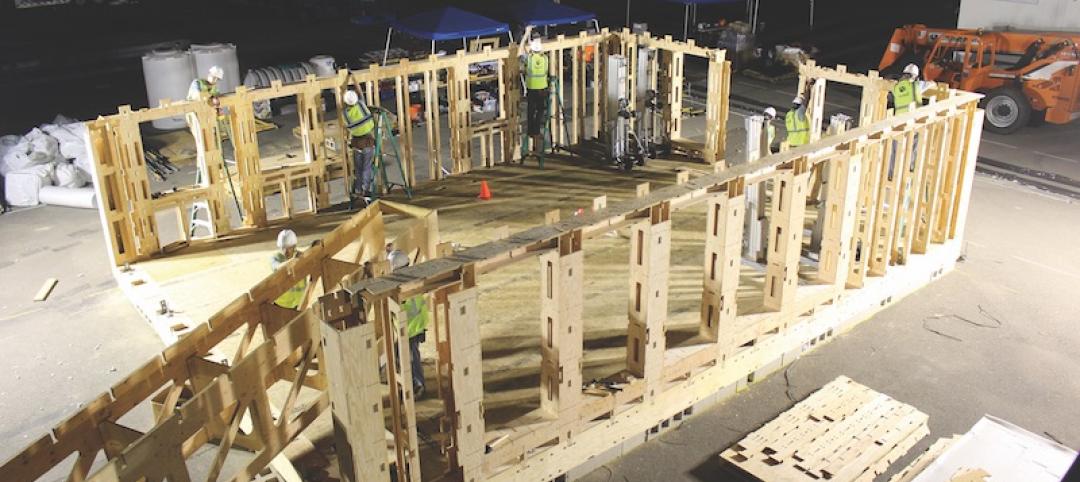The U. S. General Services Administration’s Design Excellence Program is a shining example of a government initiative that has done great good for the public, at reasonable cost. The brainchild of the late Daniel Patrick Moynihan, U. S. Senator from New York, and ably administered since 1994 by the GSA’s Office of the Chief Architect, Design Excellence has given cities and towns across the country some of the most beautiful, inspiring, and technically innovative buildings in America.
This assertion is especially true for some of the new federal courthouses built under Design Excellence—for example, Thom Mayne’s Wayne L. Morse U. S. Courthouse in Eugene, Ore. (winner of Platinum Honors in BD+C’s “Building Team Awards” in 2010; see http://www.BDCnetwork.com/WayneLMorseCourthouse) and Richard Meier’s federal building and courthouse in Central Islip, N. Y. Both are arguably the finest-looking public buildings for miles around.
Since the bombing of the Alfred P. Murrah Federal Building in downtown Oklahoma City on April 19, 1995, followed by the tragedy of September 11, 2001, designing federal buildings has become much more complicated, with increasingly stringent requirements for blast protection, prevention of progressive collapse, and air distribution security measures. For example, GSA’s Facilities Standards for the Public Building Service (PBS 100) require that no air handling unit be larger than 25,000 CFM, and no AHU can serve more than one floor—all in the name of protecting occupants against, say, poisonous gas attack by terrorists.
And while Design Excellence has had a profoundly uplifting effect on the readily visible aspects of public architecture, sometimes the gritty details of the inner workings of these buildings get short shrift.
That’s the case with the new U. S. Courthouse in Cedar Rapids, Iowa. This elegant eight-story structure has an unusual history. Design was initiated in 2002 and took seven years to complete, only to have the project put on hold off and on due to lack of funding. Then came the great flood of June 2008, which severely damaged the old 1930s-era federal courthouse in this city and forced the court to evacuate to leased space. (GSA later reconstructed the old courthouse and turned it over to the city of Cedar Rapids.) The 278,813-sf replacement facility was put on the fast track for Congressional funding. It opened to the public last November 5 and recently achieved LEED Gold certification.
With its six-story bifurcating atrium and a football field’s worth of north-elevation glazing, the new courthouse has quickly become recognized as the premier public building in northern Iowa. Designed by Boston’s William Rawn Associates, with local firm OPN Architects as AOR, it is yet another trophy in the vast Design Excellence showcase.
Less obvious to the building’s overall success, however, has been the contribution of the mechanical engineering effort, led by Lincoln Pearce, PE, LEED AP, Associate Principal and Project Executive with MEP firm KJWW Engineering. KJWW and energy modeling firm The Weidt Group had a thorny set of problems to overcome:
PROJECT SUMMARY
U.S. District Courthouse for the Northern District of Iowa
Cedar Rapids, Iowa
Building Team
Owner: U. S. General Services Administration
Design architect: William Rawn Associates
Architect of record: OPN Architects
Design peer review: HGA
Structural engineer: LeMessurier Consultants
Civil engineer: Ament, Inc.
MEP engineer: KJWW Engineering Consultants
ME controls: Baker Group
Electrical contractor: Hunt Electric; Acme Electric
Plumbing contractor: AAA Mechanical
Pre-commissioning: System Works
Energy modeling: The Weidt Group
Blast consultant: Hinman Consultants
Fire protection: Code Consultants Inc.
LEED consultant: EcoDEEP
CM/Owner’s agent, commissioning agent: Jacobs
CM as constructor: Ryan Companies U.S.
GENERAL INFORMATION
Project size: 278,813 sf, 8 stories
Construction cost: $115,000,000
Project dates: 2002 to November 2012
1. GSA capped the building’s contracted energy use at 55 kBtu/sf/year, 31% less than a typical office building (at 80 kBtu/sf/year).
2. To meet GSA’s PBS P100 standards, each floor had to have two air handling units, one on the courtroom side, one on the tenant side. GSA’s anti-terrorism standards also prohibit air intake below the fourth floor; furthermore, the architect did not want air intake or relief on any exterior walls. Traditional mixed-air AHUs would have had air economizers to bring in outside air to condition the building under the right conditions. However, this would have required all 16 AHUs to be ducted to the roof, which was deemed too costly.
3. The extensive north-wall glazing raised concerns about warm, humidified air from the courtrooms condensing on the glass in cold weather.
All this was further complicated by the often conflicting design standards imposed by a long list of tenants: the U.S. Bankruptcy Court, the U.S. Court of Appeals, the U.S. Attorney, the U.S. Marshals Service, the Trustees Program, the Federal Public Defender, the Probation Office, both U.S. Senators from Iowa, and the GSA, in addition to the U.S. District Court.
For example, the U.S. Marshal required a continuously operating decoupled outside air system (DOAS) for holding cells—“almost like a hospital isolation room,” says Pearce—and greater-than-normal security lighting, both of which had the potential to play havoc with the energy budget.
Two innovations—and a tense presentation
The MEP team came up with a couple of innovative approaches to solve these problems. The first was to eliminate the use of outside air for all AHUs and to install a completely decoupled dedicated outside air system. Two AHUs on the ground floor were dedicated exclusively to providing outside air for the building and controlling building pressure and humidity. They draw in air from the roof, condition it, and send it back for interior ventilation; they also take the air they put into the building, bring it back, and exhaust it at grade level. The outside air coming in and the exhaust air going out also exchange energy through enthalpy wheels.
The second solution was to use water economizers rather than traditional air economizers. Water economizers create chilled water by routing the chiller system condenser water outdoors to be cooled by the cold ambient air; the cold water is then used to cool the indoor system’s chilled water via a heat exchanger. In cold weather, the system creates chilled water without having to run the mechanical cooling system.
However, there are a couple of problems with water economizers. One is that ice can form on the cooling tower in cold months. The other is that, in months with warm days and cold nights, the mechanical chillers, which are needed during the day, sometimes don’t start right up when there is cold water coming to them from the water economizer (which may have been operating overnight).
“That took some thought about controlling the sequences from one system to the other to accommodate varying flow in those months when you’re going from freezing at night to warm days, and you want to make sure the system runs reliably,” says Pearce.
In the end, systems commissioning verified that the water economizers were operating as designed. Even though using water economizers added to the initial cost and complexity of the HVAC system, they proved less costly on a life cycle basis.
“Air economizers would have required larger air handling rooms throughout the building, in addition to all the chases and chase space up to the roof for air intake and relief,” making air economizers impractical in terms of available floor space, says Pearce. “By going to water economizers, we were able to use smaller, less costly air handlers that were very easy to control,” he says.
As for the threat of condensation on the 59,675-sf glass wall—which, with skylights, constituted 38% of the exterior wall space—that required a trip to Washington. Pearce recalls the event with a note of trepidation in his voice. “We had to go before the GSA’s HVAC Peer Review panel, three of the most respected engineers in our field, and defend our analysis,” he remembers. The MEP team satisfied the panel that its approach—flushing air along the curtain wall—would prevent condensation
The project came in at 53 kBtu/sf/year, below the 55 kBtu/sf/year in the model. But that wasn’t the most satisfying result, says Pearce. “We heard from some of the GSA people that this was the first GSA building they had worked on where the mechanical systems worked as designed on the first day.”
Related Stories
Great Solutions | May 5, 2017
No nails necessary: Framing system comes together with steel zip ties and screws
Clemson University’s School of Architecture develops a patent-pending construction method that is gaining attention for its potential use in rapid, low-tech sustainable housing.
Building Technology | May 5, 2017
Tips for designing and building with bathroom pods
Advancements in building technology and ongoing concerns about labor shortages make prefabrication options such as bathrooms pods primed for an awakening.
Building Technology | Apr 21, 2017
AIA selects 2016 Upjohn Research Initiative Projects
Grants awarded to initiatives that study various aspects of design within the built environment.
Building Technology | Mar 9, 2017
Prefabrication's predicament: It's much harder than it looks
Many of the nation’s largest contractors, including Gilbane, Mortensen, Skanska, and Turner, have been utilizing prefab techniques on select projects for a decade or more.
Great Solutions | Mar 8, 2017
Pop-out balcony is a breath of fresh air for stuffy hotel rooms and apartments
In less than one minute, Bloomframe transforms from an insulated picture window to an open balcony.
Building Materials | Feb 15, 2017
New metamaterial cools roofs without any energy consumption
The material is barely thicker than aluminum foil and can be economically manufactured for large-scale residential and commercial applications.
Building Technology | Feb 13, 2017
Denver’s ‘smart neighborhood’ will be packed with futuristic technology
The neighborhood will become a test lab for innovative technology.
Virtual Reality | Feb 1, 2017
Tour ancient buildings and cities as they were when new with Lithodomos VR
An Australian archeological startup is bringing the ancient world to a VR headset near you.
Building Technology | Jan 30, 2017
Machine learning could help buildings notify occupants about critical systems failures before they happen
Data from sensors built into HVAC units paired with a machine learning algorithm predicted 76 out of 124 real faults for an Italian hospital.
Building Technology | Jan 27, 2017
The driverless clinic: How buildings powered by AI can help promote wellness and enhance human connections
In the future, we envision that the smart technology in our phones will be embedded in the items we wear and the objects we use.
















